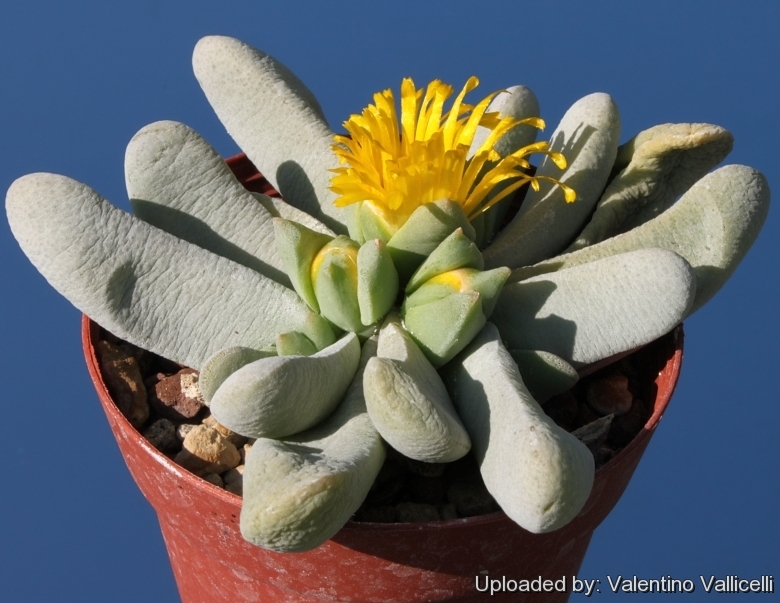
Glottiphyllum oligocarpum Photo by: Valentino Vallicelli
SL84-102 30 km East Steytlerville. It shows the typical whitish colour only with a lot of sun.
Origin and Habitat: Cape-Province: Willowmore. (South Africa)
Synonyms:
Common Names include:
AFRIKAANS (Afrikaans): Vaal Skilpadkos
Description: It is a small branching stemless, perennial succulent.
Leaves: Club-shaped to tongue-shaped, blunt at the tip, soft-fleshy, whitish, glossy green or blue-green, to olive green, with some raised dots; in two rows, are borne in rosettes (usually in 2 pairs), that are often so tightly packed that they appear to be borne pressed flat against the ground, up to 4.5 cm long and 7-12 mm in diameter.
They shows the typical whitish colour only with a lot of sun.
Flowers: Large, yellow.
Blooming season: Flowers bloom in autumn.
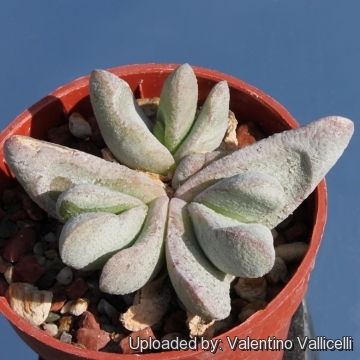 Glottiphyllum oligocarpum Photo by: Valentino Vallicelli
Glottiphyllum oligocarpum Photo by: Valentino Vallicelli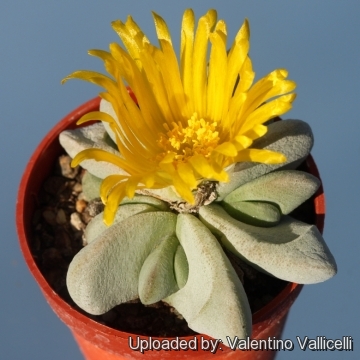 Glottiphyllum oligocarpum Photo by: Valentino Vallicelli
Glottiphyllum oligocarpum Photo by: Valentino Vallicelli Glottiphyllum oligocarpum Photo by: Cactus Art
Glottiphyllum oligocarpum Photo by: Cactus Art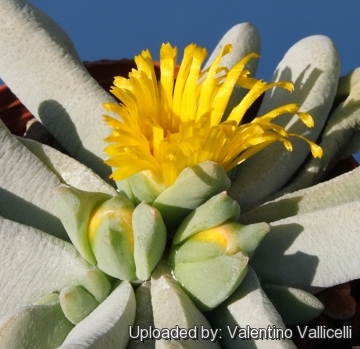 Glottiphyllum oligocarpum Photo by: Valentino Vallicelli
Glottiphyllum oligocarpum Photo by: Valentino Vallicelli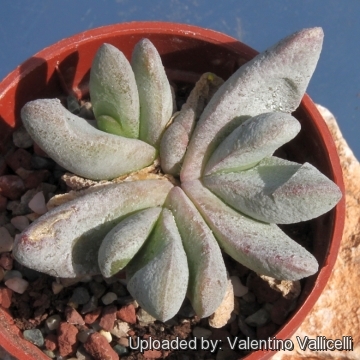 Glottiphyllum oligocarpum Photo by: Valentino Vallicelli
Glottiphyllum oligocarpum Photo by: Valentino Vallicelli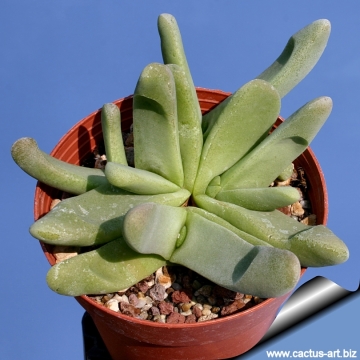 Glottiphyllum oligocarpum Photo by: Cactus Art
Glottiphyllum oligocarpum Photo by: Cactus Art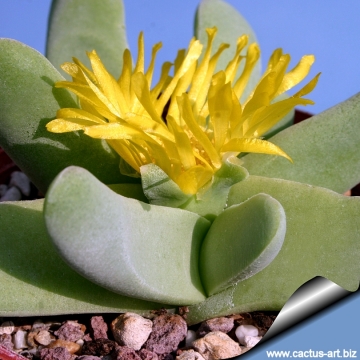 Glottiphyllum oligocarpum Photo by: Cactus Art
Glottiphyllum oligocarpum Photo by: Cactus Art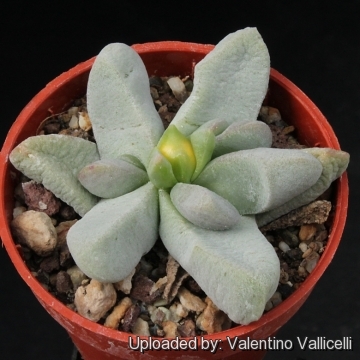 SL-84-102 30 km East Steytlerville. Photo by: Valentino Vallicelli
SL-84-102 30 km East Steytlerville. Photo by: Valentino VallicelliCultivation and Propagation: The plants in this genus represent some of the more easily cultivated succulent species. Their main growth period is in late winter and were heading for spring-summer dormancy, but they do best with at least a little water all year. Requires little water otherwise their epidermis breaks (resulting in unsightly scars). Water moderately from the middle of summer to the end of winter, and keep the compost almost dry when the plants are dormant. Water minimally in spring and summer, only when the plant starts shrivelling (, but they will generally grow even in summer if given water) In areas prone to frost, grow in an intermediate greenhouse or conservatory, in pots of cactus compost, obtainable from good garden centres. Keep cool and shaded in summer, but provide maximum light the rest of the year. Remember that a sunny locality is best, otherwise they will not flower properly. However there are two ways to grow glottiphyllums: The first is to let nature take her course, which means giving them large pots and copious water; they will burgeon into enormous masses of glistening green leaves. The other is to starve them into svelteness by hot summer droughts, small pots, and firm loam. The results can be very attractive. In any case it is best to treat them as late winter growers. Soft leaves mean easy to damage. May be susceptible to mealybugs.
Propagation: Seeds or cuttings. Seeds germinate very easily and can be sown in early to mid-spring, but can be sown at most times of the year (Avoid very hot weather in summer) and germinated in heated humid environment. Do not sow the seeds too deep. If sown too deep, they will be smothered and probably not germinate. Under ideal conditions, seedlings will grow rapidly. Plant the seedlings out when they are 3–5 cm in height.
Alternatively, use stem cuttings taken towards the end of summer in an heated propagating case (15-21°C) Cuttings root easily and remain true to the species, while seeds tend to hybridize.
Your Photos
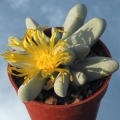
by Valentino Vallicelli
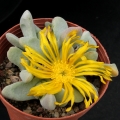
by Valentino Vallicelli





















